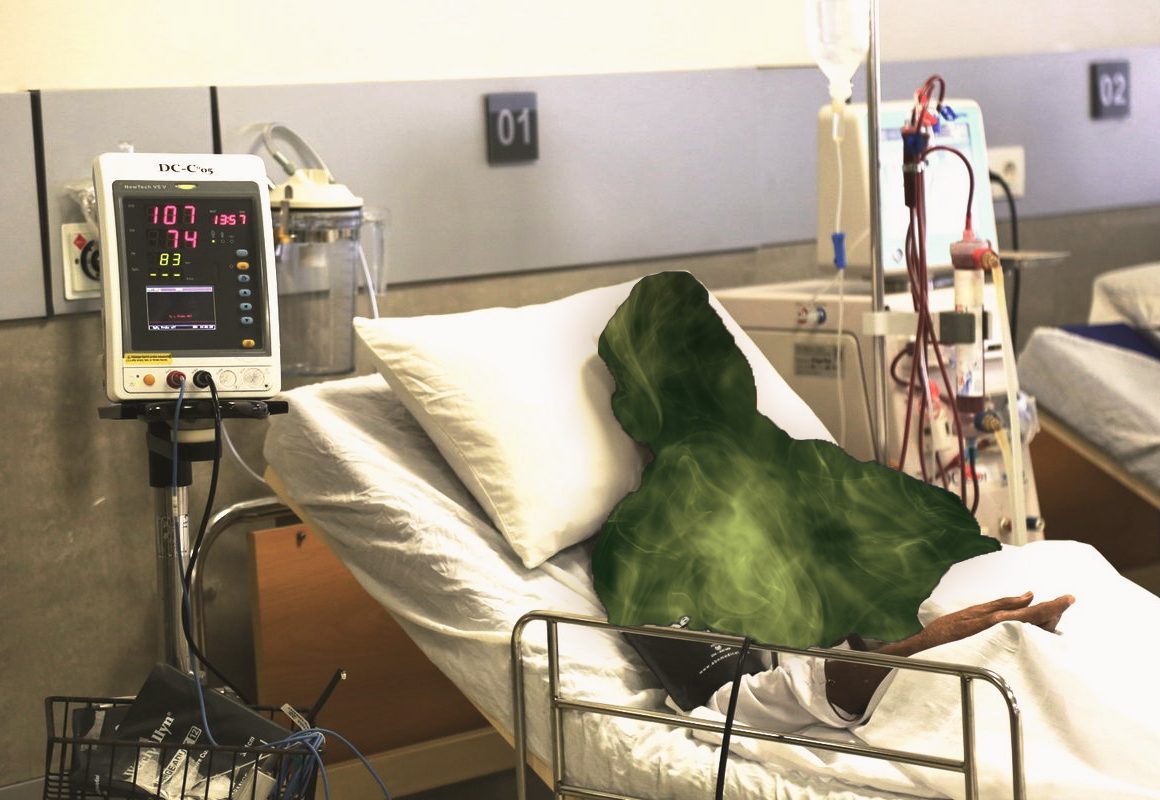Kiran, who has seen just twenty-eight springs of her life, lived a healthy life until three months ago. Then, one day, she started having headaches. The initial checkup revealed high blood pressure, and, all of a sudden, her kidneys failed, requiring dialysis. She started dialysis through a catheter in her groin, for no one in the city had the skill to place the catheter in the neck, which is considered the best place for a dialysis catheter. Since her arms revealed no big-sized vessels, large enough to attempt a connection between them, a fistula was not possible either. Three months after starting the dialysis, she came to see her doctor one day, complaining of fever and malaise. She was told that she had got an infection in her blood from the dialysis catheter, which was supposed to come out. As no one could replace the catheter in that hospital, she was transferred to another hospital, where you would have expected a speedy recovery and a happy ending. Not quite close. Her weary body succumbed to infection—she died the same day. This is how most dialysis patients live in Pakistan—in pain, poverty, and isolation, in the constant fear of prolonged suffering or sudden death.
Dialysis is not only a life-saving technique but also a chronic therapy. One of the replacement therapies for failed kidneys, this blood-washing technique can keep a patient going, sometimes for dozens of years. Since its early days in World War II, dialysis has seen significant improvements in its method of delivery, efficacy, and outcomes. Soon after it emerged as a life-saving technique, dialysis evolved into a chronic therapy for patients with kidney disease, keeping them alive and healthy for months and even years. It kept getting better and better. Most recently, extensive research on dialysis in the last two decades has answered most of the riddles about its frequency, dose, and duration, making it the primary replacement therapy in kidney failure patients, offering an almost everyday life to the patients who would have died otherwise. (Transplant remains the ideal replacement therapy, but it is not as common).
Yet, none of these benefits seem to accrue from dialysis as it is done in Pakistan. Rather, once a patient starts on dialysis, he is regarded as terminally ill, one who is breathing on borrowed time, a guest for a few months or, perhaps, a year.
Why does dialysis, a procedure which has become so beneficial in the modern world, fails to provide health benefits to our patients? In addition, how much does dialysis costs us as a nation? These two main questions need to be answered before further discussion on this subject.
The most crucial factor that deprives our patients of the benefits of dialysis is poverty. On the surface, the impact of poverty may appear simple: whether you have money and get dialysis, or you have no money, thus no dialysis. In the first case scenario, you live; in the second, you die. This assumption is only a half-truth. Of course, poverty draws a line in some instances, but mostly it influences the social fabric and dynamics of dialysis much more subtly than it apparently seems to do. A patient may delay the evaluation, for example, because he has no money to go to a big hospital or see a specialist, meanwhile unknowingly inching toward renal failure. Another patient may suffer because of cheap but poorly trained staff. Another still may not afford a fistula or even a good-quality dialysis catheter (yes, catheters come in varieties in Pakistan). Lastly, some dialysis patients can’t even afford essential medicines and nutrition, without which even perfect dialysis can barely make a difference. Poverty makes this already complex disease into an overcomplicated reality.
The outcomes of dialysis are not significantly different for the rich, either. Unfortunately, our local maxim “money can buy anything in Pakistan” fails to work for dialysis patients. After poverty, the second major factor responsible for substandard dialysis is our flawed healthcare system, which allows for practicing outdated methods. Our way of doing dialysis is unhealthy. Even though the world has settled the questions of dose, duration, and frequency of dialysis, our hospitals continue to do dialysis that is inadequate, poor, and without much benefit. These deviations and deficiencies from the standard are often attributed to the lack of resources and education on the patients’ part, but at best, this is only partially true. In reality, our healthcare system doesn’t know how to do better. Neither does it show any curiosity for learning. Our system remains captive to an ancient regime that is not only immune to change but even resistant to it. As long as our healthcare establishment remains under the influence of these archaic dogmas, no amount of riches, resources, or technologies, can help our patients.
Dialysis in this country is not only expensive but also costly. Here, by the word expensive, I mean the price one pays for each dialysis session, which is very high compared to the income in general. It is costly because of the sacrifice a patient, his family, his friends, and the state have to make for this treatment. Apparently, a single session of dialysis costs from 4000 PKR to 12,000 PKR, depending on the facility a patient chooses. The actual cost, however, turns out to be huge compared to this tiny amount. First, let us look at the patient himself, who, being on dialysis, not only becomes unemployed and loses his livelihood. At the same time, he becomes a burden on someone else’s income. Then, our system requires a dialysis patient to always be accompanied by a family member who takes his day off just to be with the patient. This patient attendant may not lose his job, but then what can he be expected to contribute to his family’s economy? Furthermore, these patients need dedicated transport, expensive medicines, and frequent doctor visits—all of which can take a heavy toll on a family’s finances. As such, dialysis patient in Pakistan is nothing but a costly tragedy.
Lastly, dialysis, inherently an unhappy phenomenon, assumes an even more gloomy perspective because of society’s attitude toward dialysis patients. People shower these patients with sad looks full of pity. Family or friends, relations or visitors—all try to console the invalid with prayers for less pain and an easy end. A silence reigns among family members themselves, who, when they speak, convey only the feelings of being sorry for the sick while encouraging each other by invoking strong faith. How can a patient be expected to live on when he finds himself surrounded by so much pity and sadness? In short, whatever life the illness, poverty, and poor healthcare have spared for the patient is suffocated by society.
In a word, dialysis patients, poor or rich, minority or majority, educated or not, live a life full of uncertainty, fear, and hopelessness. They seem to live a medieval life (when the outcome of an illness was as much a conjecture as was its diagnosis and treatment) in the modern era, which has made the death from the disease a distant reality. This tension of facing extinction at a time when the broader society rarely thinks about death makes it hard for the patients to become intimate with their surroundings.
Estranged and isolated, they lose connection with the outside world, which seems to be fading in front of their eyes.
I wish we had the means to measure the costs of this suffering.
But we humans are very cunning: we have developed neither any metric to measure the poverty of poor health, nor any gadget to calculate the pain of poverty.




